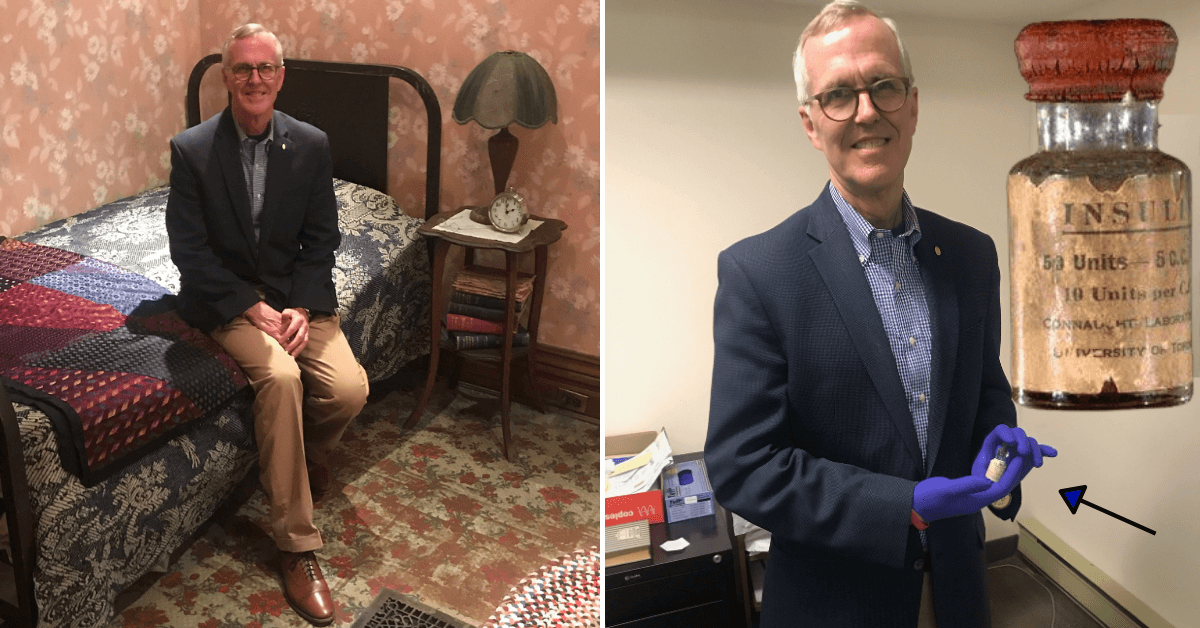The First Human Insulin Injection to Treat Diabetes
Leonard Thompson | January 11 & 23, 1922
By the early 1920s, many researchers suspected that diabetes was caused by a malfunction in the digestive system related to the pancreas. At that time, the only way to treat the fatal disease was through a diet low in carbohydrates and sugar, and high in fat and protein. That diet allowed people diagnosed with diabetes to live for about another year.

Thompson's first dose had an apparent impurity which caused an allergic reaction. A refined process was quickly developed to improve the cow pancreas from which the insulin was derived. His second dosage was successfully injected 12 days later on January 23.
Frederick Banting and Charles Best discover insulin as a life-saving therapy for diabetes
A breakthrough occurred at the University of Toronto in the summer of 1921 when Frederick Banting and Charles Best successfully isolated insulin from canine test subjects, produced diabetic symptoms in the animals, and started a program of insulin injections that returned the dogs to normalcy. Their discovery was announced to the world on November 14, 1921.
Two months later, with the support of John Macleod of the University of Toronto, the two scientists began preparations for the first human insulin treatment to be administered. With assistance from biochemist J.B. Collip, Banting and Best extracted a reasonably pure formula of insulin from the pancreas of cattle from slaughterhouses, and used it to treat Thompson.
Leonard Thompson became the first person to receive an insulin injection
The Canadian teenager improved dramatically, and the University of Toronto immediately gave pharmaceutical companies license to produce insulin, free of royalties. By 1923, insulin had become widely available, saving countless lives around the world, earning Banting and Macleod the Nobel Prize in Medicine. To this day, it is still the shortest period of time that a Nobel Prize was awarded following the discovery of a medical breakthrough.

UMass Chan Medical School Diabetes Center of Excellence co-director, David Harlan, MD (above) at the Banting House in London, Ontario, Canada, where where Sir Frederick Banting awoke at 2:00 AM on October 31, 1920 and jotted down the idea that led to the discovery of insulin.

